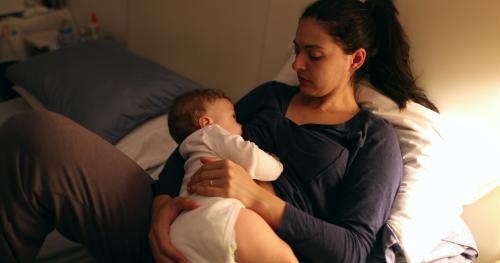The paper summarized here is part of the Spring 2022 edition of the Brookings Papers on Economic Activity (BPEA), the leading conference series and journal in economics for timely, cutting-edge research about real-world policy issues. The conference draft of the paper was presented at the Spring 2022 BPEA conference. The final version was published in the Spring 2022 issue by Johns Hopkins University Press. The recording of the conference session can be found below. Replication files of this paper can be found here. Read all papers published in this issue here. Submit a proposal to present at a future BPEA conference here.
Despite widespread reports of a “she-cession,” most women managed to keep their jobs during the COVID-19 pandemic, suggests a paper discussed at the Brookings Papers on Economic Activity on March 24, 2022. That was a mixed blessing, however, because women—much more so than men—bore the brunt of caring for children and elderly parents.
“Far more mothers, and other women who are caregivers, have been stressed, frustrated, and anxious because they did not leave their jobs than have been forced to exit the workforce or cut back their hours,” Claudia Goldin of Harvard University writes in Understanding the Economic Impact of COVID-19 on Women.
Usually, recessions affect male employment more than female employment because more men work in cyclically sensitive sectors such as manufacturing and construction, while more women work in usually more-stable service sectors. But the pandemic recession of 2020 hit services harder than previous recessions. Women working in restaurants, hospitality, retail, and personal care, saw their workplaces shuttered. The jobs most affected by the pandemic meant that people without college degrees, both women and men, were more likely to lose their jobs than people with college degrees, who often could work from home.

In May 2020, more than 60 percent of male and female college graduates were working at home due to COVID but only about 25 percent of women without a college degree and just 14 percent of men without a college degree were. Differences between the two education groups in remote work declined over time but have remained substantial and increased again during the Omicron wave.
“The pandemic produced both a he- and a she-cession,” Goldin writes. “Relative to previous recessions, women have been harder hit. But the largest differences in pandemic effects on employment are found between education groups rather than between genders within educational groups.”
Goldin compared the percentage of people “at work” during the pandemic with the percentage a year or two earlier for the same season. “At work” differs in one important way from employment. People with jobs but on furlough because of the pandemic, for instance, are not included in “at work.” A fall 2020-to-fall 2018 comparison, for example, adjusts for seasonal employment variation and for an anomalous spike in women’s labor force participation in the months just before the pandemic began.
The pandemic produced both a he- and a she-cession.
Goldin looked at men and women and college graduates and non-graduates, aged 20‑54. Female college graduates at work fell by 2.7 percentage points; male college graduates at work declined by 2.6 percentage points. Female non-college graduates at work decreased by 5.7 percentage points; male non-college graduates at work fell by 5.5 percentage points.
“The big differences are by education rather than gender, and that makes it more similar to previous recessions,” Goldin writes.
With schools and daycare centers closed, women, much more so than men, spent additional time caring for children. For example, childcare (including schooling) by college-graduate women who worked full time, could work remotely, and had elementary school-aged children in two-parent households more than doubled—from 8.7 hours a week before the pandemic to 17.3 hours in the early months of the pandemic. Childcare hours for custodial fathers in the same group spiked during those early months, probably to around 15.8 per week, but greatly decreased as work resumed. Because total childcare hours remained about as high, childcare hours increased for women by fall 2020.
Goldin closes her paper by speculating on whether increased workplace flexibility will benefit women after the pandemic, provided schools and daycare remain open. Possibly, mothers might be able to take on more-lucrative jobs that once required considerable travel away from home. But, if the “new normal” reduces women’s in-person face-time with colleagues and clients relative to men, they could pay a career price in the form of reduced bonuses and pay increases and fewer promotions, she writes.
Acknowledgments
David Skidmore authored the summary language for this paper. Becca Portman assisted with data visualization.
Citations
Goldin, Goldin. 2022. “Understanding the Economic Impact of COVID-19 on Women.” Brookings Papers on Economic Activity, Spring. 65-110.
Albanesi, Stefania. 2022. “Comment on ‘Understanding the Economic Impact of COVID-19 on Women’.” Brookings Papers on Economic Activity, Spring. 111-126.
Olmstead-Rumsey, Jane. 2022. “Comment on ‘Understanding the Economic Impact of COVID-19 on Women’.” Brookings Papers on Economic Activity, Spring. 126-135.








